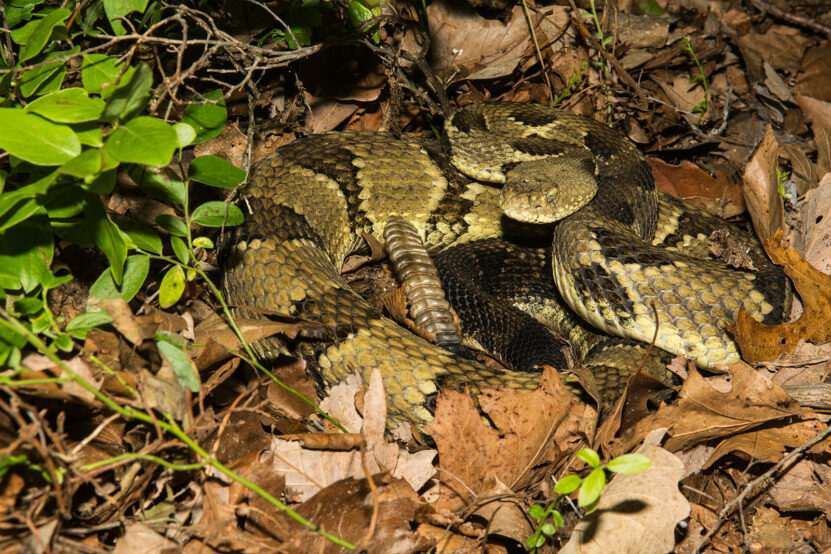Minnesota, known as the Land of 10,000 Lakes, boasts a diverse landscape teeming with wildlife. Home to several species of snakes, it is essential to distinguish between the harmless and the venomous varieties. This comprehensive guide will delve into poisonous snakes native to Minnesota, focusing on their appearance, habitat, behavior, and potential dangers. Not only will this article be an essential read for Minnesota residents, but it will also pique the interest of nature enthusiasts and snake aficionados.
1. Timber Rattlesnake (Crotalus horridus)
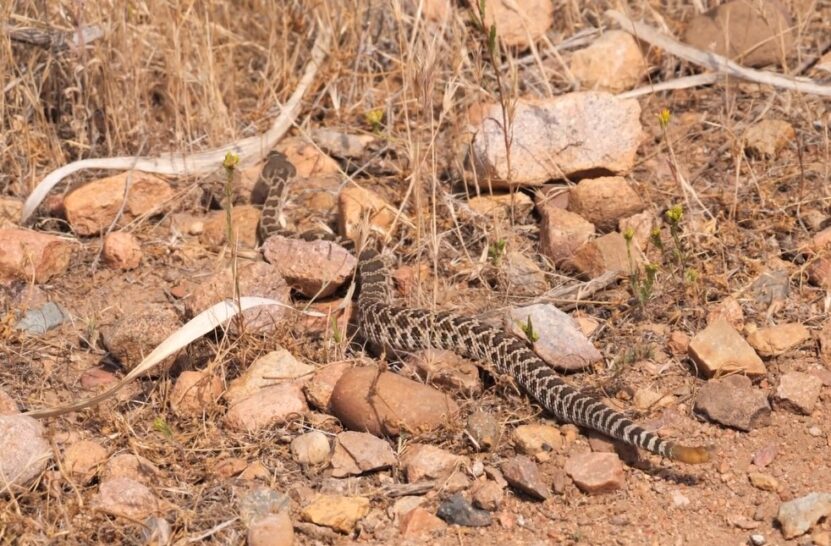
The Timber Rattlesnake is the most well-known venomous specie in Minnesota. This species is native to the southeastern part of the state, primarily residing in the Blufflands and the Richard J. Dorer Memorial Hardwood State Forest.
Appearance: Timber Rattlesnakes have a thick body, with adults ranging from 36 to 60 inches in length. They are identifiable by their distinctive rattle at the end of their tail and their keeled, V-shaped scales. Their coloration varies from yellowish-brown to gray, with dark crossbands that create a banded pattern.
Behavior: Timber Rattlesnakes are ambush predators, relying on their cryptic coloration to blend into their surroundings as they wait for prey. They primarily feed on small mammals, such as rodents, rabbits, and squirrels.
Danger: Though this specie possesses a potent venom, they are not inherently aggressive and will only strike if provoked or threatened. Bites are rare, but if one occurs, it can result in severe pain, swelling, and tissue damage. Immediate medical attention is crucial.
Conservation Status: The Timber Rattlesnake is listed as a threatened species in Minnesota due to habitat loss and human persecution.
2. Eastern Massasauga (Sistrurus catenatus)
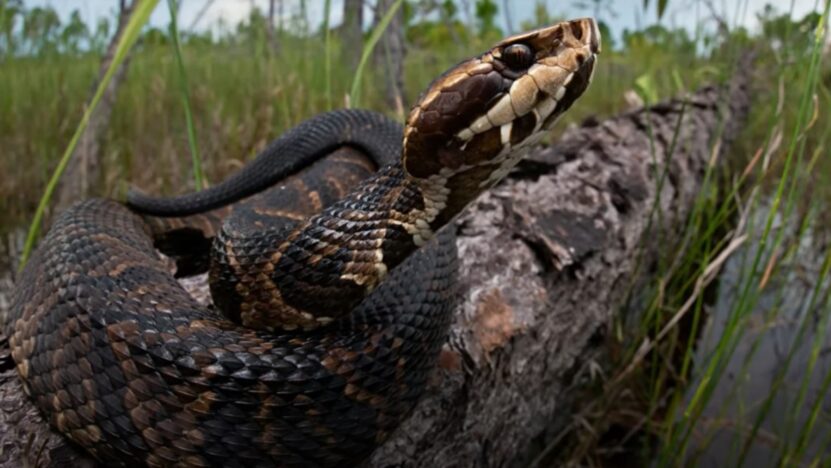
The Eastern Massasauga is a small, venomous rattlesnake found in the wetlands and grasslands of southeastern Minnesota. Although rare, these animals are more commonly seen in the Sherburne National Wildlife Refuge and the Mille Lacs Wildlife Management Area.
Appearance: Eastern Massasaugas are small rattlesnakes, typically measuring between 18 and 30 inches in length. They possess a thick body with a small rattle at the end of their tail. Their coloration ranges from gray to light brown, with a pattern of dark bands or blotches along the back.
Behavior: Eastern Massasaugas are primarily active during the daytime, hunting for prey such as rodents, frogs, and lizards. They are also known to hibernate in crayfish burrows during the colder months.
Danger: Eastern Massasaugas are timid creatures and will generally retreat if given the chance. However, they will strike in self-defense if threatened. Their venom is less potent than that of the Timber Rattlesnake, but bites can still be painful and require medical attention.
Conservation Status: The Eastern Massasauga is a candidate for federal listing as a threatened or endangered species. Their populations have been declining due to habitat loss, road mortality, and persecution.
3. Copperhead (Agkistrodon contortrix) – Rare Appearances
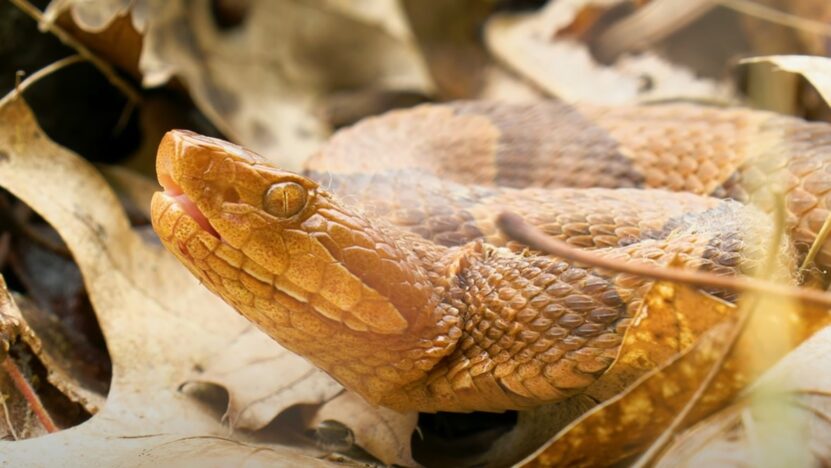
Copperheads are venomous pit vipers found predominantly in the eastern and southern United States. Though there have been occasional reports of Copperheads in Minnesota, these sightings are likely misidentifications of other snake species or escaped exotic pets.
Appearance: Copperheads are medium-sized snakes, ranging from 24 to 40 inches in length. Their distinctive coloration includes a coppery-red or brownish head, with a pattern of hourglass-shaped bands along their body.
Behavior: Copperheads are ambush predators that feed on small mammals, birds, and amphibians. They are primarily nocturnal and tend to be more active during the warmer months.
Danger: Copperheads are generally not aggressive but will strike if they feel threatened. Their venom is less potent than that of the Timber Rattlesnake or Eastern Massasauga. However, a bite can still result in pain, swelling, and tissue damage, requiring immediate medical attention.
4. Cottonmouth (Agkistrodon piscivorus) – Rare Appearances
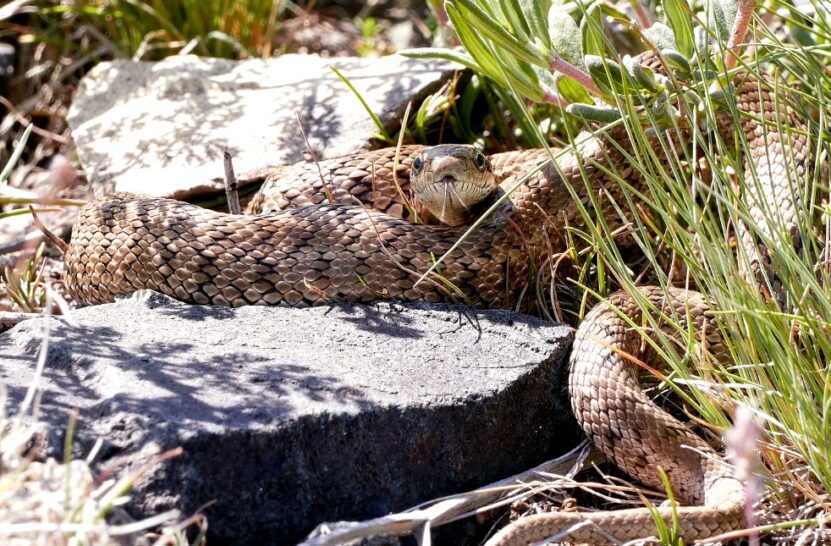
The Cottonmouth, also known as the Water Moccasin, is a venomous pit viper native to the southeastern United States. There have been infrequent reports of Cottonmouths in Minnesota, but these are likely cases of misidentification or escaped pets.
Appearance: Cottonmouths are heavy-bodied snakes that can reach lengths of 30 to 48 inches. They have a distinctively thick and dark appearance, with coloration ranging from olive-green to brown or black. This specie gets its name from the white, cotton-like lining inside its mouth, which it displays when threatened.
Behavior: Cottonmouths are semi-aquatic snakes that primarily inhabit wetland areas. They feed on fish, amphibians, small mammals, and other reptiles. These snakes are known to be more aggressive than most other North American venomous snakes but will still generally avoid confrontation if possible.
Danger: Cottonmouth bites can be dangerous, with their venom causing severe pain, swelling, and tissue damage. Medical attention should be sought immediately in the case of a bite.
Other Snakes That Can Be Found in Minnesota
1. Common Garter Snake (Thamnophis sirtalis)
One of the most widespread and frequently encountered snake species in Minnesota, the Common Garter Snake, can be found in a variety of habitats, including wetlands, grasslands, and urban areas.
Appearance: Common Garter Snakes are relatively small, measuring 18 to 26 inches in length. Their coloration varies, but they typically exhibit a pattern of three light stripes running along their dark-colored body.
Behavior: These snakes are active during the day and feed on a diverse diet, including insects, earthworms, amphibians, and small mammals.
2. Eastern Hognose Snake (Heterodon platirhinos)
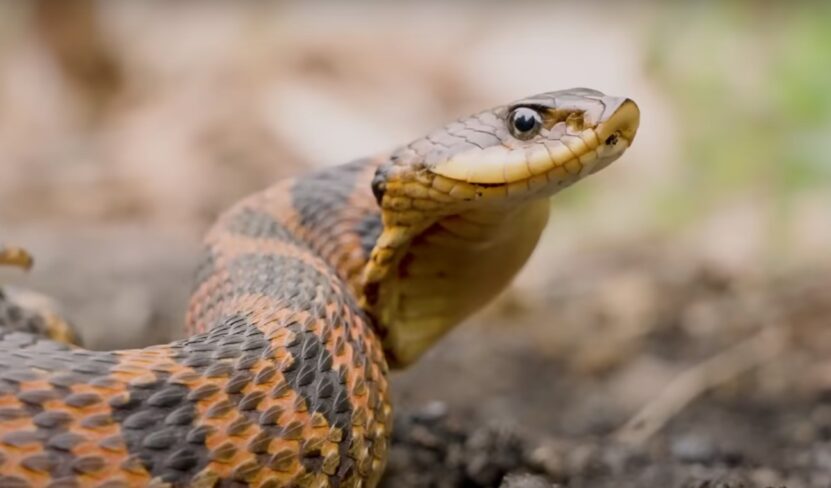
Eastern Hognose Snakes are known for their unique upturned snout, which they use to dig in sandy soils for their preferred prey, toads. These snakes inhabit sandy, well-drained areas such as prairies, savannas, and dunes.
Appearance: Eastern Hognose Snakes are medium-sized, ranging from 20 to 33 inches in length. They exhibit a variety of color patterns, including shades of brown, gray, or orange, with dark blotches on their back.
Behavior: When threatened, Eastern Hognose Snakes are famous for their theatrical displays, including flattening their necks like a cobra and even playing dead.
3. Northern Water Snake (Nerodia sipedon)
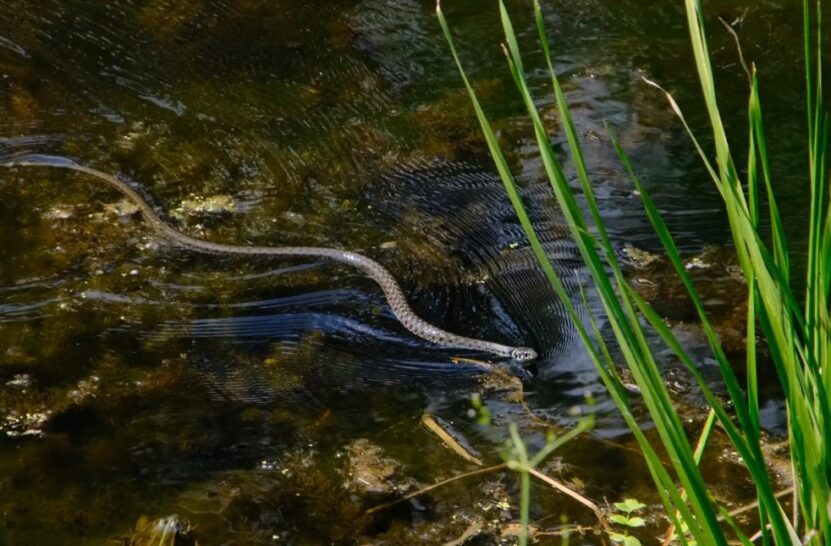
The Northern Water Snake is a semi-aquatic species found near various water sources, such as lakes, ponds, rivers, and marshes. They are efficient swimmers and proficient at catching fish and amphibians.
Appearance: Northern Water Snakes are medium to large-sized, measuring 24 to 42 inches in length. They exhibit a dark, banded pattern on a lighter background, with colors ranging from brown to gray or reddish-brown.
Behavior: These snakes are primarily diurnal and can often be seen basking on rocks, logs, or other surfaces near water.
4. Redbelly Snake (Storeria occipitomaculata)
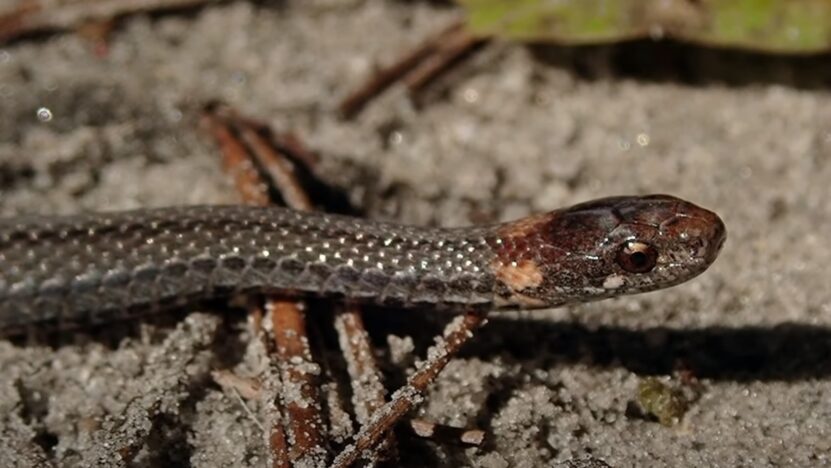
Redbelly Snakes are small, secretive snakes typically found in moist, wooded areas. They are named for their distinctive red or orange belly.
Appearance: Redbelly Snakes measure 8 to 16 inches in length and have a gray or brown back with a distinctive light-colored ring around the neck.
Behavior: These snakes are primarily nocturnal and feed on a diet of slugs, snails, and worms.
5. Smooth Green Snake (Opheodrys vernalis)
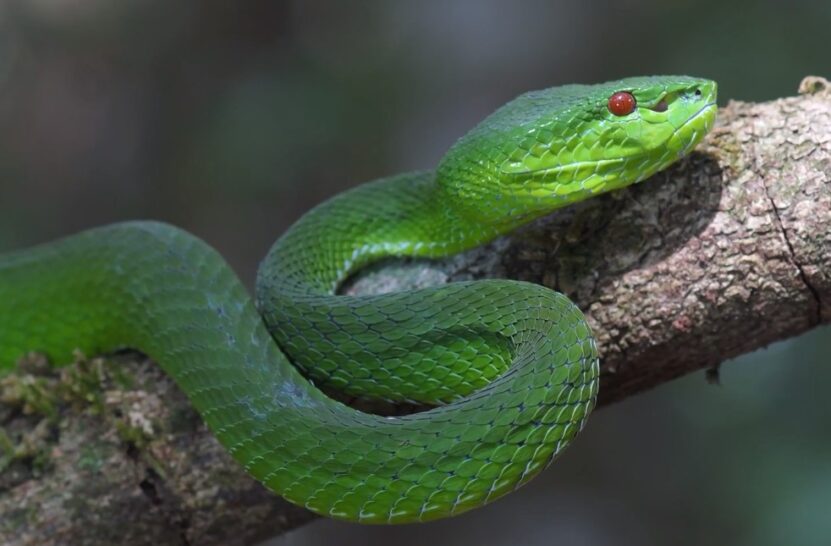
The Smooth Green Snake is a small, arboreal species found in grassy areas, meadows, and wetlands. Their bright green coloration helps them blend seamlessly into their surroundings.
Appearance: Smooth Green Snakes measure 12 to 20 inches in length and have smooth, bright green scales on their back and a pale yellow or white belly.
Behavior: These snakes are active during the day, hunting insects such as spiders, caterpillars, and grasshoppers.
Final Words
While Minnesota is primarily home to just two venomous snake species (the Timber Rattlesnake and Eastern Massasauga), occasional reports of Copperheads and Cottonmouths have surfaced. It is important to remember that these sightings are likely misidentifications or isolated incidents and not representative of established populations in the state. Nonetheless, understanding the appearance and behavior of these potentially venomous snakes can help promote safe and respectful coexistence with all of Minnesota’s diverse wildlife.

